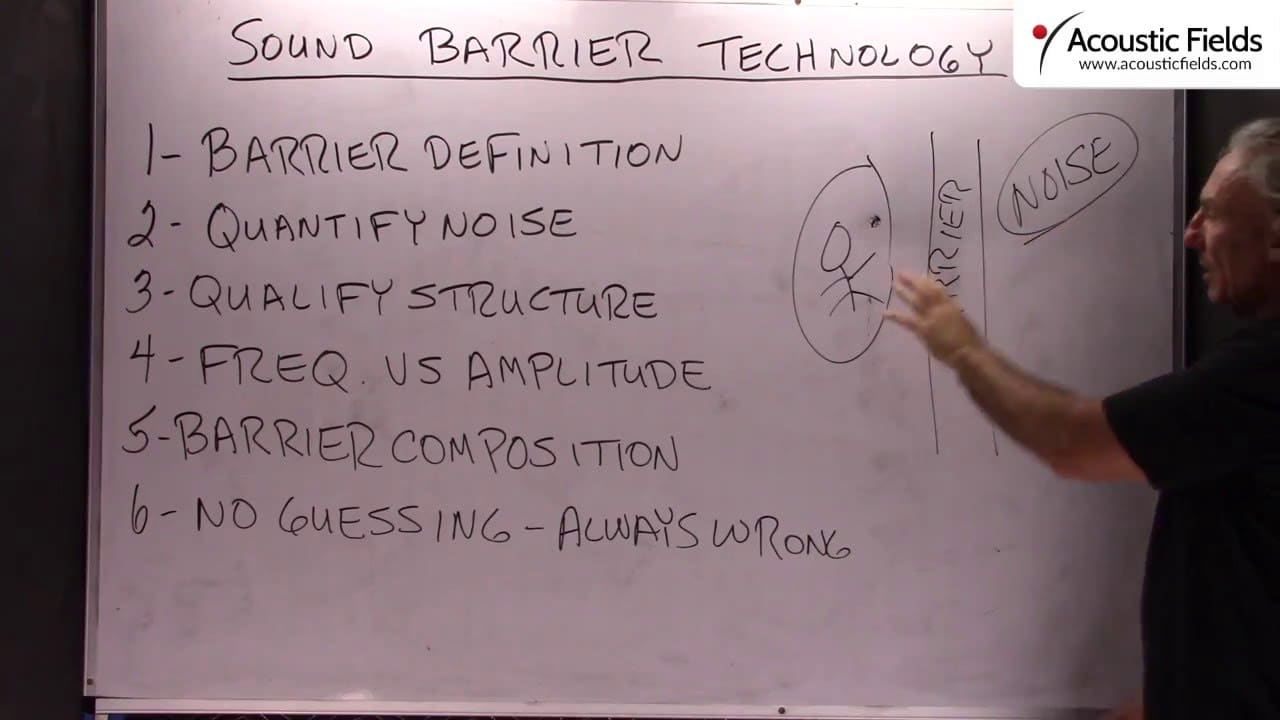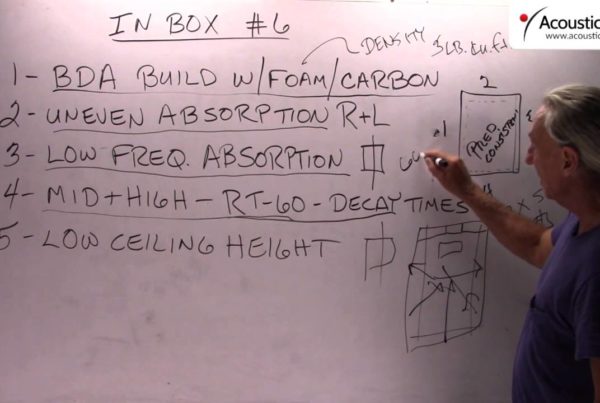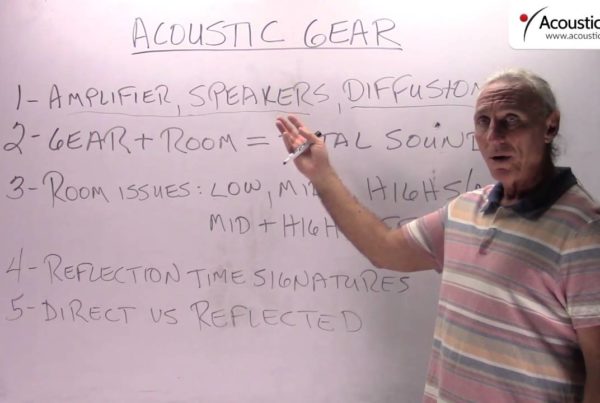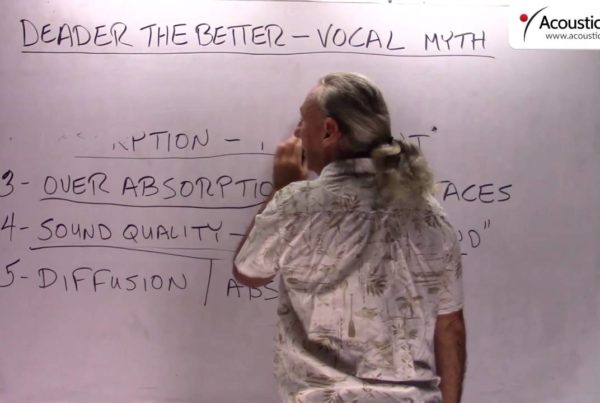Today we’re going to talk about sound barrier technology because there’s a lot of misinformation out there. And I’ve been building buildings for over 40 years and you have to get this right because noise is such a problem in our society today and there’s no guessing allowed. So you have to really understand the steps and the processes.
Barrier definition. What is a barrier? If you have a noise source – and I don’t care what it is – and you are here, quickest way to eliminate or reduce or attenuate that noise is to build a barrier between the noise source and the individual concern. So a barrier is a partition or a situation, a structure that keeps the noise from getting over here. And also it can work this way if you have a noise here, it can keep it from getting over to here.
So you have to first quantify your noise. How much noise do we have in our first example here? How much do we have? What is the frequency and what is the amplitude or the strength at each frequency? And the barrier must be designed to deal with these two situations: frequency and strength. And I see a lot of people using the wrong barrier for the wrong frequency and the wrong amount or amplitude and strength of that frequency. So you have to be careful.
So you’re going to quantify the noise but you have to qualify the structure that you’re building to deal with the noise. So qualify, quantify. Those are the two things that you have to use. Frequency versus amplitude must be considered in any barrier design. Both are critical. Both are very, very critical. This common situation we see with the double dry wall with the inch of airspace between most of them, that’s a good barrier technology but it quits at a 125 hertz. What good is that going to do you in a home theater room or a control room or a two channel listening room?
So you have to make sure that the frequency and the strength of that frequency is reflected in the barrier. Usually as a general rule the lower the frequency, the more layers you need and the density of those layers but it’s also the arrangement of those layers inside the wall depending on frequency and depending on strength. So you have to really make some definitions here when you’re composing if you will the barrier that you’re going to use.
And you cannot guess. If you guess you’ll guess wrong every time. And this is a situation that applies in acoustics all the time. People read something, they then get thinking about it, then they think, well, this might work in my problem. But if you haven’t done any measurement to quantify the noise that you’re dealing with – and these are time measurements over time the lowest part of the noise issue may occur on a Tuesday, the highest part of the noise issue may occur on a Thursday and you have the measure the frequency and the strength of those. So takes a time study, you can do it, it’s not that difficult. You can even do it with an iPhone and I’ll show you how to do that sometime.
So no guessing please, quantify and qualify the structure, quantify the noise. Build the structure that stops the noise that you’re dealing with.
—
This is an unedited transcript from our video series from Acoustic Fields. There will be some errors in grammar and sentence structure that occur during this translation process.
For complete understanding and comprehension, please view the video which is included in this text. For any additional information regarding this topic or others relating to room acoustics, please contact us directly at:
P: 520 – 392 – 9486








We use broadband absorption in the two most critical frequency regions in small rooms. Our Diaphragmatic absorbers, ACDA series, have…
Interesting web site and provocative introduction. Please check your copy for typos, otherwise nicely presented. I would like to see…
There is no such thing as soundproof anything especially carpet. Low frequency noise transmission requires a permanent construction fix with…
Hello Dennis! Our neighbors put a Ice Bath in their garage which is right below our bedroom and the Low…